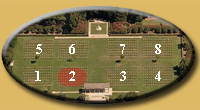







































In Memory of
Bombardier GEOFFREY CATON
1455205, Royal Artillery
And, Special Air Service Regiment, A.A.C.
Who died age 22
On 10 July 1943
Son of Thomas and Ellen A. Caton, of Widnes, Lancashire.
Bombardier GEOFFREY CATON
1455205, Royal Artillery
And, Special Air Service Regiment, A.A.C.
Who died age 22
On 10 July 1943
Son of Thomas and Ellen A. Caton, of Widnes, Lancashire.
Remembered with honour
SYRACUSE WAR CEMETERY, SICILY
SYRACUSE WAR CEMETERY, SICILY
Born in Widnes between October and December 1920, Geoffrey was the fourth Eldest of seven Children of Thomas Caton and Ellen A Caton (nee Ellis), who are both thought to have originated from Widnes, having lived at Eleanor Street and Bold Street as children. Having Married in 1913 prior to the birth of their first Child Tom, further additions to the family where made prior to Geoffrey's birth when Margaret was born in 1915 and Joan in 1918. Having already got two sisters Geoffrey was joined by a third sister in 1925 when Alicia was born, and then by two further brothers with the addition of Ronald in 1923 and Harry in 1928
Enlisting into the British Army,
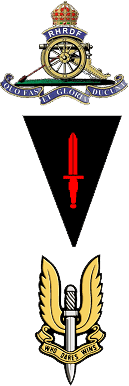 Geoffrey commenced his Military Career with the Royal Artillery. Whilst is it not know what role he undertook with the Royal Artillery normal Army Life was not for him and he transferred to No.11 Commando, a unit he would have had to volunteer for and pass a rigorous selection test, serving alongside Paddy Mayne, who went onto be one of the British Army's most decorated soldiers despite never having been awarded the Victoria Cross that he was nominated and accepted for.
Geoffrey commenced his Military Career with the Royal Artillery. Whilst is it not know what role he undertook with the Royal Artillery normal Army Life was not for him and he transferred to No.11 Commando, a unit he would have had to volunteer for and pass a rigorous selection test, serving alongside Paddy Mayne, who went onto be one of the British Army's most decorated soldiers despite never having been awarded the Victoria Cross that he was nominated and accepted for.In 1940, volunteers were called for from serving Army soldiers within certain formations still in Britain and men of the disbanding Divisional Independent Companies originally raised from Territorial Army Divisions and who had seen service in Norway. Some later recruiting was conducted in the various theatres and among foreign nationals joining the Allies. In 1942 the Admiralty agreed to volunteers being sought from the Royal Marines Division and the first Royal Marines Commando, No.40, was formed in mid February. The same year, recruits were also called for from the British Police Force. Some 400 men passed Commando training and were then assigned to various battalions.
Dudley Clarke proposed the name "Commando" after the raiding and assault style of Boer Commando units of the Second Boer War. Despite Churchill's liking for the name, some senior officers preferred the term "Special Service" and both terms coexisted until the latter part of the war
Persistence of the term "Special Service" derived the terms "Special Air Service", for the original No. 2 Commando parachutists, and longer term the "Special Boat Service" whose origin lays in Lt. Roger Courtney's Folbot Troop, later Boat Section" of No.8 Commando and "101 Troop" of No.6 Commando
Each Commando group was to consist of a headquarters unit plus ten troops of 50 men including three officers (changed in 1941 to six troops of 65 men per Commando including a Heavy Weapons Troop). Some thirty Commando units were formed during the war within the Army, Royal Marines, Royal Navy and Royal Air Force, together with a number of other Special Forces units. Army Commandos and Royal Marines Commandos were eventually formed into four brigades.
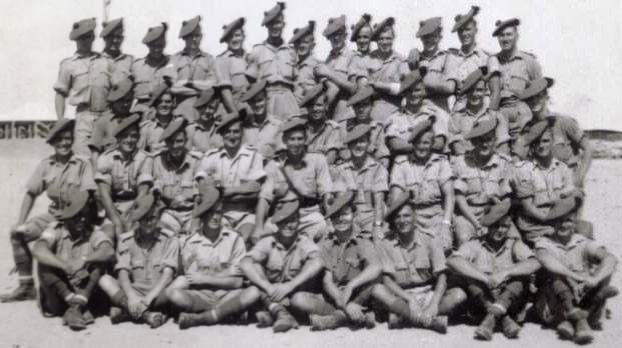
11 (Scottish) Commando – The Black Hackle
Created following Churchill's call to form a "butcher and bolt" raiding force following Dunkirk, the newly formed 11 (Scottish) Commando first saw action in June 1941 during the Litani River Operation in Lebanon against the Vichy French Forces, a successful operation led by the then lieutenant Paddy Mayne. The raid was particularly brutal and confused and saw 130 officers and men, around a third of the strike force, being wounded or killed.
After the raid the Powers to be decided that Commandos were not the troops they wanted in Africa and the 11th Scottish Commandos were stationed in Cyprus and generally left out of the war. As a result of Paddy Mayne's leadership on the raid had attracted the attention of Captain David Stirling.
It was late 1941, when the Commando forces were not being utilised fully in the conflict, despite Prime Minister Churchill's instructions and desires, a former Guards Commando, Captain David Stirling, whilst in Hospital with back injuries from a Parachute accident, put together a scheme for a small, highly trained Unit to work behind Enemy Lines. Despite being turned own by various Offices, Stirling eventually bluffed his way into the CIC's Office and placed his ideas in front of him. His actions resulted in his promotion and instructions to form a Unit of 60 men and Officers, to be called 'L' Detachment, Special Air Service Regiment. The SAS had been formed. Paddy Mayne was recruited one of the founder members of the Special Air Service (SAS), and it is possible that Bombardier Caton moved with him or transferred at a later date.
After intensive and rudimentary parachute training at Kabrit 'L' Detachment's first raid took place on the 17th November 1941. It was a disaster. In a storm and heavy winds, 6 Officers and 55 Ors jumped from Bombay Bombers to attack the German airfield at Tamimi and Gazala. Men were killed in the drop, many were captured, some disappeared and the airfields were never reached. Only 4 Officers and 18 Ors returned.
Training continued and on the 8th December 1941, 'L' Detachment, travelling with the Long Range Desert Group, attacked Tamit and Sirte. Lieutenant Paddy Mayne with 7 men attacked Tamit where they destroyed 14 aircraft by bombs, 10 by gunfire, destroyed Fuel and Ammo dumps. Blair and Corporal Reg Seekings shot up a Mess Hut containing some 50 enemy Officers and men.
On 27th December 1941 Blair and 5 men attacked Tamet and destroyed 27 Aircraft, 3 Lorries and POL dumps. On the 10th January 1942 Blair was promoted to 2.I.C. 'L' Detachment SAS. In July of that year the SAS received Wilys Jeeps which they armed with redundant RAF Vickers 'K' Guns. Now the SAS had the men and the Weapons.
7th July 1942 the first jeep raid on Kufra was a success; during the operation Blair Mayne was seen jumping from the moving jeeps to plant bombs on the aircraft. And so it went on, 9th July, 14 A/C destroyed at El Daba, 11th July, 22 at Fuka, 17th July 40 at Sidi Haneish. On the 21st September 1942 'L' Detachment was renamed 1st Special Air Service Regiment, a second Regiment was formed under Bill Stirling (David's brother); a French and Greek Regiment was also formed. Throughout the remainder of the year the raiding went on with great success.
On the 24th January 1942, Lieutenant Colonel David Stirling was captured and he sent word that Mayne was to take charge, So Paddy Mayne became a Temporary Lieutenant Colonel and took over command of 1st SAS. The Regiment was reorganised into two separate parts, the Special Raiding Squadron and the Special Boat Section (the forerunner of the Special Boat Service). As a major, Paddy Mayne was appointed to command the Special Raiding Squadron and he led the unit with distinction in Italy until the end of 1943.
Temporarily renamed the Special Raiding Squadron, for the invasion of Sicily (Operation Husky), on the 10th July 1943, the SRS made a raid on a large Italian battery at Capo Murro di Porco, on the southeast coast of Sicily, which had to be destroyed before the main Allied landings could take place. After hitting the beach at 0330hrs the SRS assault teams threw themselves against the cliff and began to claw their way to the summit. They were surprised by the apparent lack of opposition. Most had been expecting a rough ride. Yet the beach was not mined: there was no sudden cutting burst of machine-gun fire; nor the earsplitting explosion of grenades. Once on top of the cliff, the seven-man teams moved in on the battery, silhouetted against the moonlight. The Italian garrison, about 700 strong, was still underground and it was just a matter of winkling them out. Most were too shell-shocked to put up much of a fight; others were just too scared to stick their noses above ground. As the assault teams began rounding up prisoners, demolition squads went into action to spike the guns. Heavy fighting continued throughout the night with the SRS attacking command posts, bunkers and barracks. The assaults, often carried out at the point of bayonet, were successful and the enemy positions were destroyed
As dawn broke on 10 July, the SRS men were able to see the scale of their success. For the loss of one man killed, Bombardier Caton, and six injured, they had put six heavy guns out of commission, killed around 100 enemy soldiers and captured some 200-300 more. Indeed, the bag of prisoners became so unmanageable that Paddy Mayne ordered the Italians into a convenient field, stripped them of their belongings and told them to wait for the main invasion force.
Bombardier Geoffrey Caton, Royal Artillery and 1st Special Air Service Regiment (Special Raiding Squadron), was killed in action on the 10th July 1941, and was initially given a field burial on the left hand side of the lane leading to the Farm Alconia at about a distance of 50 yards before being later interred with honour at the SYRACUSE WAR CEMETERY, SICILY.
The inscription on Bombadier Caton's headstone reads;
"OUR GEOFF"
DEARLY LOVED AND REMEMBERED
BY DAD, MAM, MARGARET
AND ALL AT HOME
DEARLY LOVED AND REMEMBERED
BY DAD, MAM, MARGARET
AND ALL AT HOME
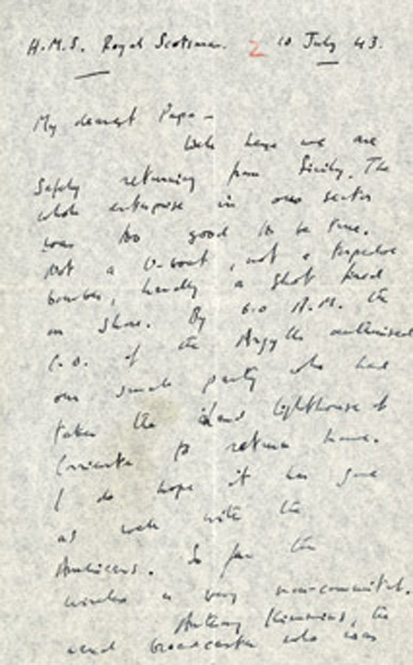
Bombadier Caton, who served as a Corporal in the SAS was awarded the 1939-45 Star; Italy Star; and War Medal.
One other member of the Special Raiding Squadron attacks on Capo Murro di Porco, was Randolph Churchill, son of the then British Prime Minister. In a letter to his father wrote on the 10th July 1943 whilst aboard the HMS Royal Scotsman, he described the weather conditions, troop morale, and enemy resistance:
"So far it has been like clockwork. I trust that by breakfast time good news will be flooding in on you." The next day, with the operation a success, he wrote,
My dearest Papa
Well here we are safely returning from Sicily. The whole enterprise in our section was too good to be true. Not a U-boat, not a torpedo bomber, hardly a shot fired in/on shore. By 6.0 A.M. the C.O. of the Argyles outlimited our small party who had taken the island and lighthouse to return home. I do hope it hope it has gone as well with the Americans. So far the? is very non-committed. Anthony Kimmins, the news broadcaster who was in Bulolo (?) going to? On? With me is here again. He will take a letter home & also I hope one I left on board? Last night if I can recover it in? Tomorrow.
I won't try & give you a description of the landing. You will already know more than I do &? I saw was like a? ? ? At?
This is just to send you my love & warmest congratulations.
Your loving son
Randolph
Phil Jennett, 2009-08-03









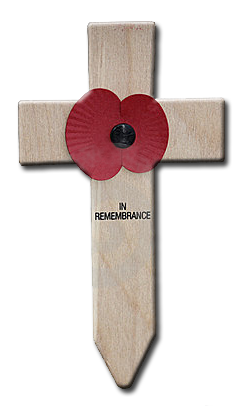


 CATON, GEOFFREY, G
CATON, GEOFFREY, G